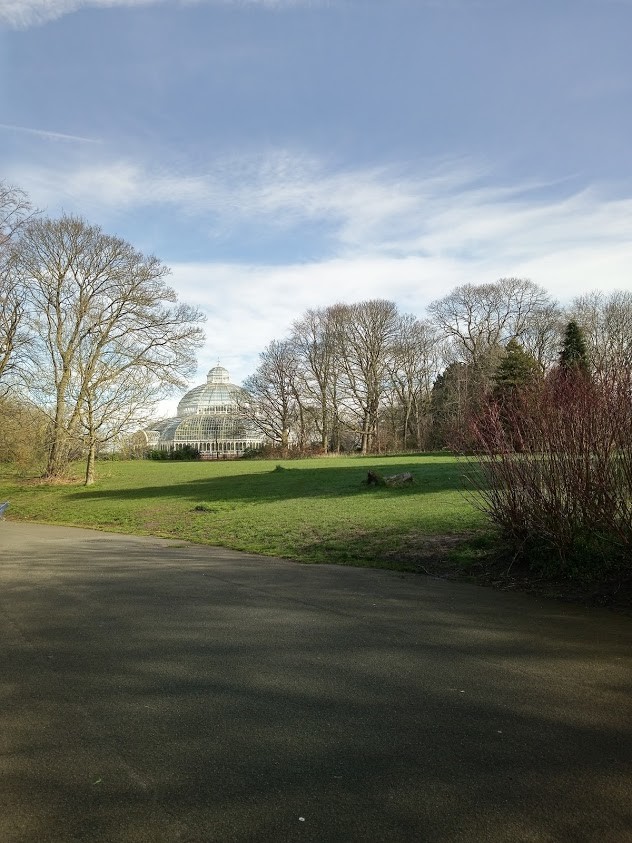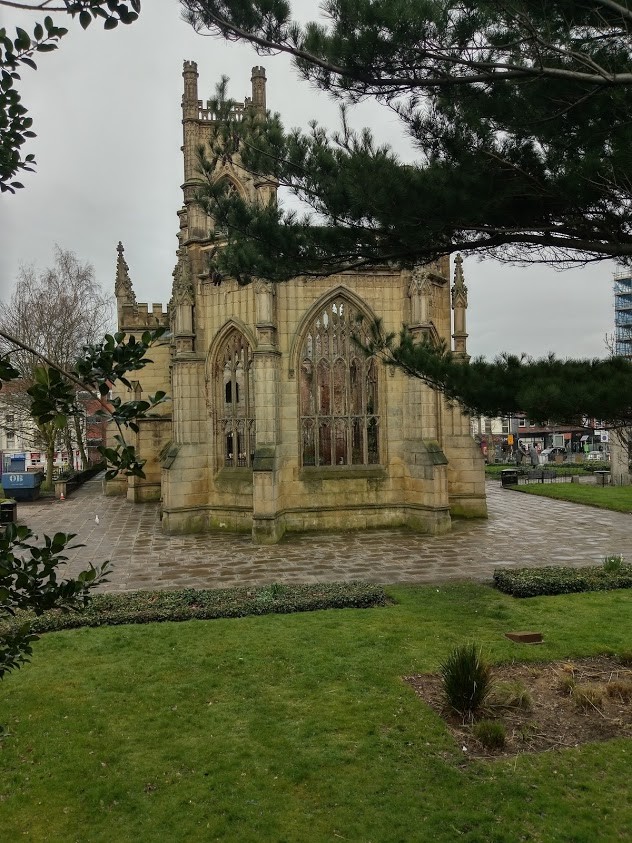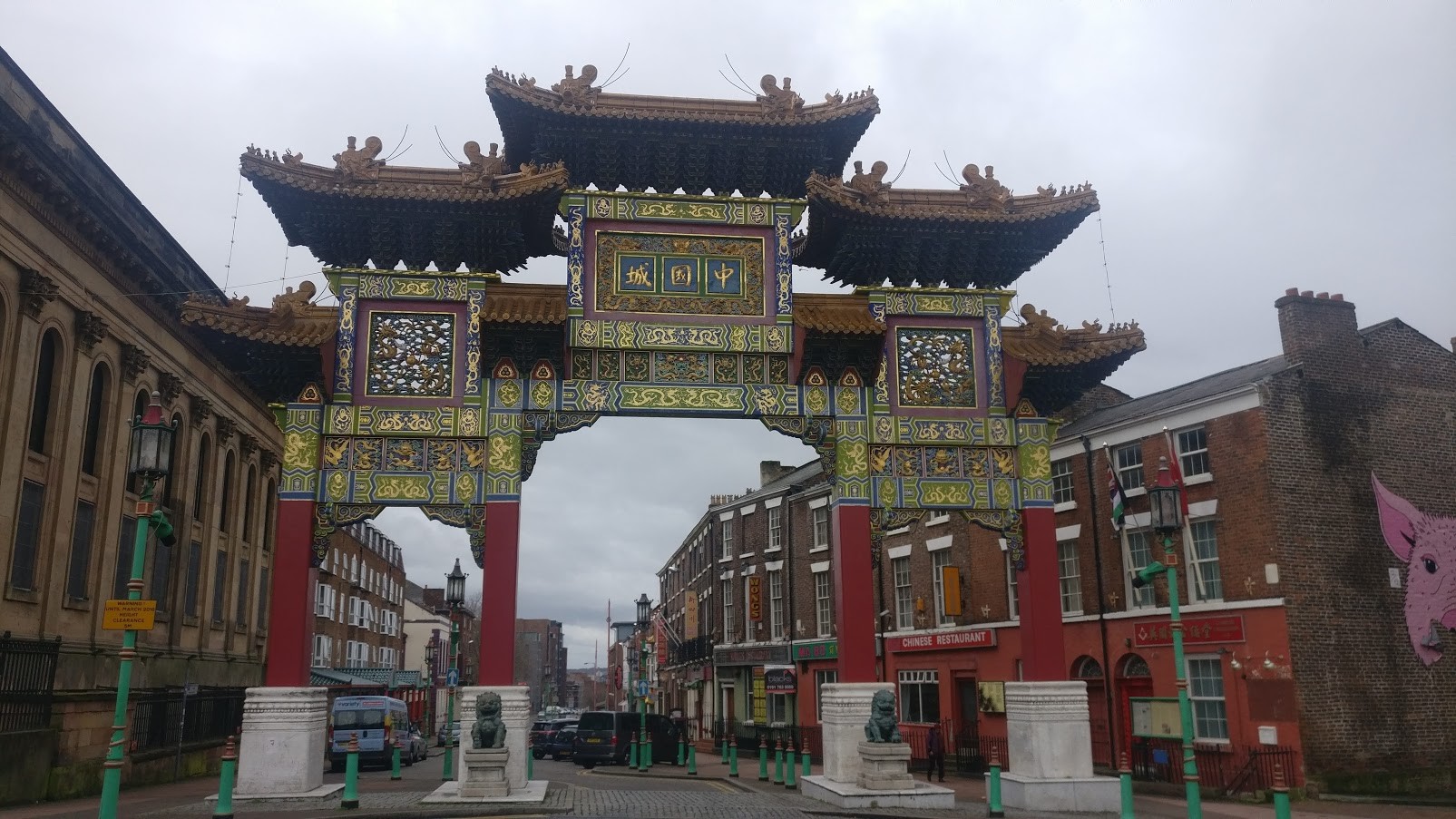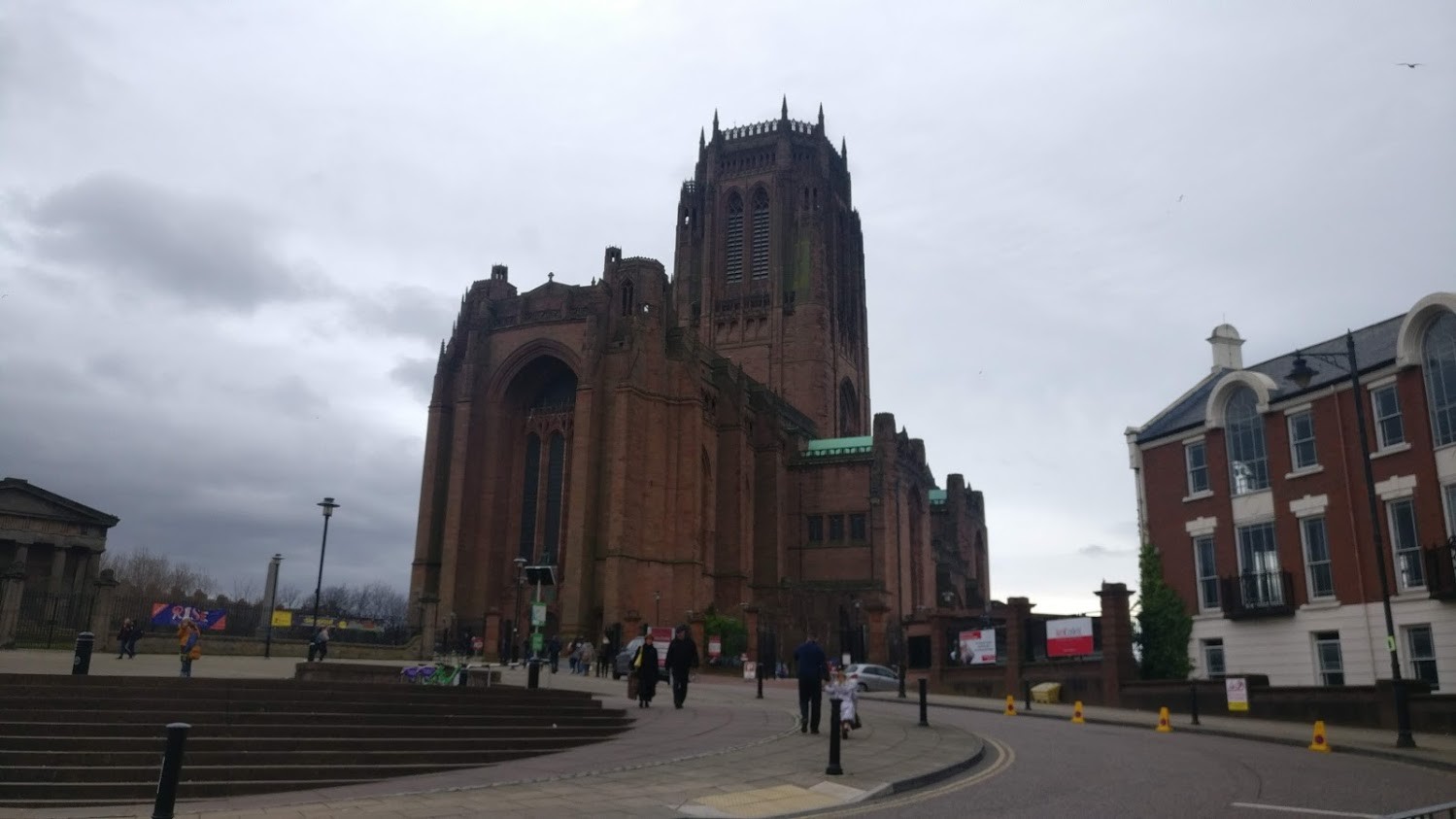My third day in Liverpool
On our last day in Liverpool, we decided to spend some time in the parks of the city and visit its most famous religious landmarks. That is why we woke up early in the morning again, so we can start our day early and have enough time to visit all of the places on our checklist. After we had our English breakfast we went to the bus stop to wait for our bus that would bring us to Sefton Park, which was our first stop for the day.
The Sefton Park in Liverpool
We started our day with a walk around the Sefton Park, which was a Royal Deer Park back in the sixteenth century but was slowly turned into a park for the people of Liverpool. Nowadays, the park is one of the biggest green areas in the city and has many ponds around it with various birds flying around.
While we were there, we went to the famous Palm House of Sefton park, which was known for hosting various events and at the time we went there was a yoga class inside, so we had to wait to enter.

When the yoga class finished we entered inside the Palm House, which was quite humid and warm, but that was due to the plants that were growing there. As the name suggests, there were many palm trees around and as per the brochure, the Palm House was housing more than twenty species of palms. Among the plants growing in the Palm House were also Jasmine, Hibiscus and the Bird of Paradise flower, which was one of my favourite flowers since I have visited the Madeira island. The Palm house also had a dedicated area where the orchids were planted, which were more than thirty species spread around in all kinds of forms and colours. The Palm House in Sefton Park was quite a nice place to stop by, as it was a tranquil place where you could feel the power of nature.
Then, we continued strolling around the park where we saw various birds and small furry animals walking around uninterrupted. In the park, there were many shrines and some of them were built in a typical Chinese style, which was making the park look a bit diverse. While walking around we saw the obelisk of the park, which was marking the other main entrance.
The Princes Park in Liverpool
Right next to Sefton Park was the Princes Park of Liverpool, which was a very small park in the city, compared to Sefton park. There was not so much to see in the park, except its Wood Henge, which resembled the Stone Henge in the south of the United Kingdom. Another interesting part of the park was the labyrinth on its end, which was a quite easy one. Even though the park was not that big, we had a very nice time strolling around it and breathing the fresh air of the city. It was quite a very nice experience.
The Saint Luke’s Church in Liverpool
After strolling around the beautiful parks of Liverpool we headed to the city centre again. Our first stop was Saint Luke’s Church, which was mostly known as the bombed-out church. The Saint Luke church was built at the beginning of the nineteenth century and was used as a place for worship, as well as a hall for concerts.Unfortunately, the church of Saint Luke was one of the highly damaged buildings in the city of Liverpool, during World War II when the city was attacked by the Germans. However, its foundations survived along with its tall walls to remind the people of the horrible event.

Nowadays, the church of Saint Luke, along with its beautiful garden is open to the public and can be visited at any time during the day. It gathers many along its benches and you can walk around it and admire its beautiful architecture. While walking I could see parts of its stained windows, the arches holding them and the beautiful ornaments put around the church. However, the church of Saint Luke lost its roof during the bombings of the city and it is absolutely open, as it was not restored. Despite that, nature is slowly overtaking it and now there are many flowers and trees growing around, which makes it look quite magical.
Personally, the church of Saint Luke is a place that should be visited for sure and suggest that you do it, as it is a truly incredible landmark in the center of Liverpool.
The art streets of Liverpool and Chinatown Gate
Going down the street we saw lots of artwork made from local artists that covered the walls of shops or restaurants in the city. It was quite interesting to see how their art has merged with the concrete buildings and created a very unique and diverse feeling of joy and warmth.
At the end of the street, we found Chinatown Gate, which was built at the end of the twentieth century with the sole purpose to mark the entrance to the Chinese neighbourhood in Liverpool. It was a huge Chinese gate built in the typical Chinese architectural style and was quite fascinating to look at it. The story behind the building of the Chinese Gate is that there were so many Chinese people living in Liverpool that they created their own district with Chinese shops, restaurants, pubs and many more. Even the houses around the neighbourhood looked a bit different from their ornaments added to the roofs than those of the English people.

It was interesting to learn that the first Chinese settlers came to Liverpool at the beginning of the nineteenth century and created their own community in the city. They were mainly sailors that were hired by English shipping companies who also brought their families to the United Kingdom. That is how the Chinese neighbourhood was established in Liverpool.
The Cathedral of Liverpool
After visiting the Chinese neighbourhood, we headed to the Cathedral of Liverpool, or as it is also known as the Cathedral Church of Christ in Liverpool. It was built at the beginning of the twentieth century in a Gothic architectural style and is considered to be the longest cathedral in the world and one of the largest cathedrals in the world.

The Cathedral of Liverpool is a truly massive religious building in which one would think he would get lost. At its entrance, there are some godly statues of men, but none of them looks like Jesus Christ. Then, once I entered I was stunned even more by the massiveness of the Cathedral of Liverpool. Everything was so huge and I felt so small in it. Its ceiling was designed in such a way as to recreate the bottom of a boat and had massive arches everywhere. The windows of the cathedral were humongous and were painted in various colours and were allowing enough light into the cathedral so that we can see most of it.
Going further into the cathedral, we got a brochure from the information desk on the side and I saw that there were many brochures in almost every language, which was quite nice. I got mine in Bulgarian and as per it, in the middle of the Cathedral of Liverpool, there was its lower part, which was used for many processions and could gather more than four thousand people there. It was quite fascinating to think of the size of this cathedral and how huge it was, especially if it could bring so many people in its smallest place. On top of it there was a huge bridge, which was created to overlook the processions and there was an admission fee to climb on it and it was two pounds, so it was quite a deal, as I could see so much more from there.
On the other side of the Cathedral of Liverpool, there was the Lady Chapel, which was the first part of the cathedral to be finished. It was a quite huge chapel with a long corridor leading you to a beautifully ornamented altar and behind it, there was a huge stained glass to complement its beauty.
After exploring a couple of more corridors, some of them looking quite mysterious and led us to another chapel, a bit lower than the Lady Chapel. It was like going into another secret place under the Cathedral of Liverpool and it was quite exciting. Eventually, we went out of the Cathedral of Liverpool and headed home to rest after this exhausting day of strolling around.
Photo gallery
Content available in other languages
- Español: Tercer día en Liverpool
Want to have your own Erasmus blog?
If you are experiencing living abroad, you're an avid traveller or want to promote the city where you live... create your own blog and share your adventures!
I want to create my Erasmus blog! →




















Comments (0 comments)